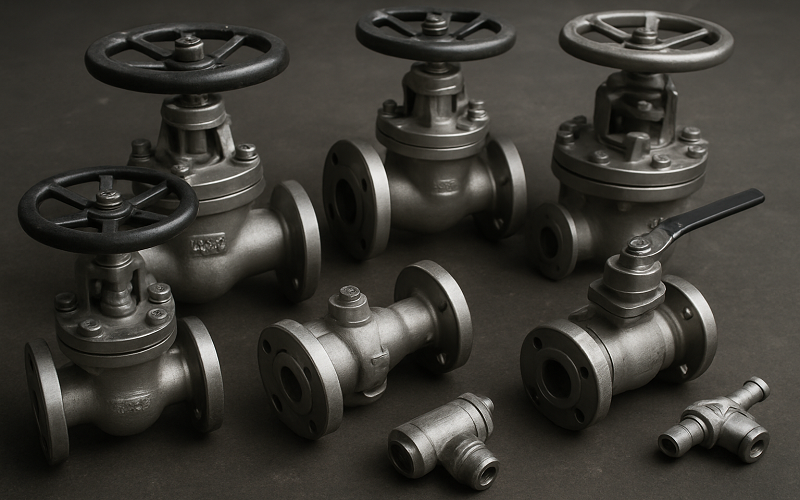Industrial valves are the fundamental elements of fluid handling used in various industries including oil and gas, petrochemicals, power plants, water treatment process and general processing industries. They are always subjected to harsh operating conditions (e.g., high pressure, temperature variations) and corrosive fluids. Without proper care, performance can degrade quickly, and you might experience costly downtime along with a danger to safety. A systematic, proactive maintenance strategy allows industries to properly increase valve life and maximize plant productivity knowing what and where to maintain can matter.
Importance of Regular Inspections
Regular examinations are key to long valve life. Valves can leak, corrode, crack or experience internal wear from the stress of continual use. Early warning signs of wear at the inspection stage reduce risk of sudden failure and enable preventive maintenance plans. An intelligent audit schedule helps to keep valves safe, reliable and in regulation with industry standards. The frequency of the test depends on the application and use media (the higher temperature, acidic or corrosive the service medium, the more frequent inspection).
Role of Proper Lubrication
Smooth mechanical movement is essential for conventional industrial valves, and friction is a major cause of destructive wear. The lubrication makes the stems and sealing areas move unrestrictedly. By using proper manufacturer recommended grease, valve service life is extended and valves are not found stuck or jammed during operational use. Lubrication is especially critical after long periods of non-use, to help allow the valve to return to operation smoothly, without being strained or scraping against itself inside. Regular lubrication minimizes wear and prolongs the life of valve moving parts.
Cleaning and Corrosion Prevention
The majority of valves are used in dirty, chemical-laden, moist, or oil filled air. If not cleaned, they deposit on components and degrade valve performance over time. There’s an even more serious threat is corrosion, particularly to marine, oil and gas industries and chemical processing. As soon as rust appears, it gnaws away at metal elements and significantly reduces service life. Regular cleaning, protective coatings, and good storage conditions can prevent this type of long term damage. Valves should be unobstructed from rust and contamination to allow for dependable operation.
Correct Handling and Installation
If not aligned properly, or tightened the wrong way, leaks may produce. Aftermarket parts with OEM specifications offers the reliability and durability of brand parts. If it is handled properly during transportation and mounted correctly when installed, the valve is spared unnecessary stress. Be aware that many failures are actually preventable if the correct sealing materials were chosen in accordance with the Valve manufacturer India manufacturer’s data and installation details, and pipeline alignment, etc., are proper.
Timely Replacement of Worn Components
The valve’s O-rings, seats, gaskets and seals wear out over time as these wear is more than the body of the valve. A lot of sectors err in waiting to replace as long as possible rather than going after savings by reducing downtime. Changing smaller internal parts in time is cheaper than letting it fail on its own. Proactive replacement versus a reactive repair allows you to avoid down time, and provides the long lasting performance all industries demand from there equipment.
Actuators and Automation Systems take the Center Stage
Automation and controllability of systems are an indelible part of almost all valve applications. Pneumatic, hydraulic, and electric actuators must be checked regularly, as they are critical system components. Calibration issues, water ingress, broken wiring, or voltage fluctuations can disrupt operation and cause extra wear on the valve. Proper maintenance of actuators and controllers, along with the valve body, improves facility reliability and reduces failure risks.
Training and Maintenance Routine
All personnel handling hoses or operating valves must be properly trained. They should also know how to identify unusual conditions, such as noise, vibration, resistance, or small leaks. When workers understand the importance of regular maintenance, safety, and correct operation, machinery failure rates drop significantly. A work environment where valve upkeep is considered something more than an afterthought spells long-term reliability, as well as safety.
Conclusion
Industrial valves are considered as long life-cycle assets whose performance has a direct impact on plant efficiency and safety. Their durable life need not be mysterious, but only requires a conscious awareness of avoiding problems through routine inspection, the proper lubrication maintenance, clean-up care and conscientious installation roller repairs. When valve manufacturer India focus on maintenance, they reduce the expensive cost of breakdowns and downtime; and experience more consistent process performance. Valve long life is not just the product of good manufacturing but also constant attention and care during the time in service.



